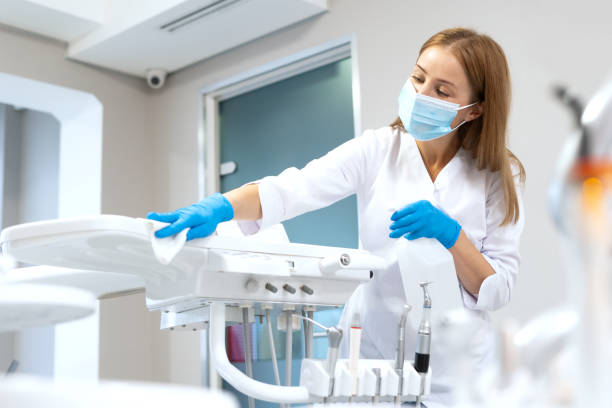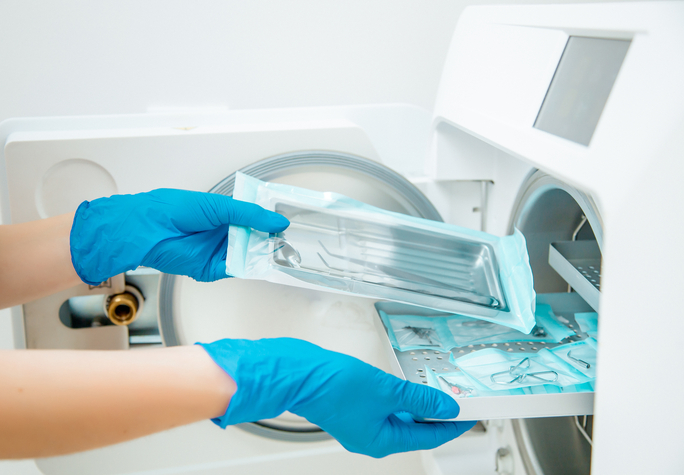

Prevention
Blood and body fluids or tissues contaminated with blood may pose a risk of transmission of HIV. Genital secretions (semen or vaginal fluid) or other body fluids contaminated with visible blood should be considered potentially infectious.
cerebrospinal,
synovial,
pleural,
pericardial,
peritoneal,
and amniotic fluid.
Have an undetermined risk of transmission. Although mucous membrane or percutaneous exposure to these fluids may pose a transmission risk, this warrants further evaluation. Exposure to nonbloody saliva, tears, sweat, urine, vomitus, or feces of HIV-infected patients is not considered to produce a risk of HIV transmission. Occupational exposure to human breast milk is not considered a transmission risk, despite its implication in perinatal HIV transmission. Mucous membrane or percutaneous exposure to replication-competent HIV in a research setting may pose a transmission risk in laboratory workers.
Exposure to infected blood – though blood transfusions, Most occurs as a result of the use of the of contaminated syringes/needles during injecting drug use.
HIV transmission routes in the health-care settings are:
injections or other invasive procedures held by contaminated non-sterilized syringes and medical instruments;
blood and blood products transfusion;
skin, organs and semen transplantation.
Universal precautions strategy assumes that everyone is potentially infectious. Before touching another person’s blood or open wounds:
Cover cuts - if we have cuts or open sores on the skin, they should be covered with a plastic bandage.
Wear gloves once and dispose of in a plastic garbage bag. Small plastic bags may be used instead of gloves, if necessary. While gloves are highly recommended, keep in mind that intact skin is an excellent barrier against HIV, as the virus cannot penetrate the skin in the absence of an open wound or mucosal cavity.
Clean up. Clean up spills of blood or other body fluids with a fresh mixture of household bleach and water. Paper towels should be used and disposed of in a plastic garbage bag. Remember to wear latex gloves when cleaning up.
Wash your hands with soap & hot water after contact with blood or other body fluids & after removing latex gloves.
Wash soiled clothing separately in hot soapy water and dry it in a hot dryer, or have it dry-cleaned.
Dispose of garbage safely - discard materials soiled with blood or other body fluids in a sealed plastic bag.
The human immunodeficiency virus (HIV) can be transmitted from one person to another through the use of non-sterile needles, syringes, and other skin-piercing and invasive instruments. Proper sterilization of all such instruments is therefore important to prevent its transmission. HIV is very sensitive to standard methods of sterilization and high-level disinfection, and methods designed to inactivate other viruses (e.g., hepatitis B virus) will also inactivate HIV.
Heat is the most effective method for inactivating HIV; methods for sterilization and high-level disinfection based on heat are therefore the methods of choice. High-level disinfection by boiling is feasible in most circumstances, as this requires only a source of heat, a container, and water. In practical and field settings, high-level disinfection with chemicals is far less reliable.
HIV has been found in various body fluids from persons infected with the virus. However, only blood, semen and vaginal and cervical secretions have been implicated in HIV transmission. Nevertheless, as all body fluids (including pus and other infected discharges and infected body cavity fluids, such as pleural fluid and cerebrospinal fluid) may contain blood or white blood cells, it is essential that all medical instruments for invasive procedures (including needles and syringes) should be cleaned, then sterilized or given high-level disinfection, for each separate patient, to prevent transmission of HIV.
It is imperative that all instruments be cleaned thoroughly before being sterilized or disinfected at high level by any method. It is suggested, particularly in health care settings where the prevalence of HIV infection among patients is high, that medical instruments should be soaked for 30 minutes in a chemical disinfectant before cleaning. This will give further protection to the personnel from exposure to HIV during the process of cleaning.
Steam sterilization (autoclaving) is the method of choice for reusable medical instruments including needles and syringes. An inexpensive type of autoclave is an appropriately modified pressure cooker (WHO/UNICEF type). (3) Autoclave and pressure cookers should be operated at 121°C (250°F) equivalent to a pressure of 1 atmosphere (101 kPa, 151 b/in²) above atmospheric pressure, for a minimum of 20 minutes.
Sterilization by dry heat in an electric oven is an appropriate method for instruments that can withstand a temperature of 170°C (340°F). This method is therefore not suitable for reusable plastic syringes. An ordinary electric household oven is satisfactory for dry heat sterilization. The sterilization time is two hours at 170°C (340°F).
A high level of disinfection is achieved when instruments, needles, and syringes are boiled for 20 minutes. This is the simplest and most reliable method for inactivating most pathogenic microbes, including HIV; when sterilization equipment is not available. Hepatitis B virus is inactivated after a few minutes of boiling and it is probable that HI\/; which is very sensitive to heat, is also inactivated after several minutes of boiling. However, in order to be sure, boiling should be continued for 20 minutes.
Many disinfectants recommended for use in health care facilities have been found to inactivate HIV in laboratory testing. However, in practice, chemical disinfectants are not reliable, because they may be inactivated by blood or other organic matter present. Furthermore, they must be prepared carefully. They may also rapidly lose their strength, especially when stored in a warm place. Chemical disinfection must not be used for needles and syringes. Chemical disinfection for other skin-cutting and invasive instruments should only be employed as the last resort, if neither sterilisation nor high-level disinfection by heat is possible and then only if the appropriate concentration and activity of the chemical can be ensured and if the instruments have been thoroughly cleaned prior to soaking in the chemical disinfectant.
The following chemical disinfectants have been shown to be effective in inactivating HIV:
sodium hypochlorite, 0.1-0.5% available chlorine;
chloramine 2% (tosylchloramide sodium);
ethanol 70%;
2-propanol (isopropyl alcohol) 70%;
polyvidone iodine 2,5%;
formaldehyde 4%;
glutaral (glutaraldehyde) 2%;
hydrogen peroxide 6%;
Other commonly used disinfectants may also be effective, but laboratory data on their effectiveness are not available.
Although experts believe it will be possible to develop a vaccine for HIV, it is perhaps 10 years or more before the vaccine becomes available for widespread use. Until a vaccine is available, appropriate prevention strategies offer the only feasible measures for avoiding HIV transmission. No cure for HIV/AIDS is in sight.
The Government of Georgia has identified HIV/AIDS among the top national priorities in early 1990s, becoming among the first Former Soviet Union (FSU) republics to develop a national HIV/AIDS programme in 1993. A National AIDS Surveillance was launched in 1985. The Law on HIV/AIDS was adopted in 1995, with amendments followed in the year 2000.
HIV/AIDS Prevention & Control interventions in Georgia since 1993 were mainstreamed through 3 national programmes: 1. National AIDS Prevention Program; 2. National Safe Blood Program, and 3. National AIDS Treatment Program. Starting from 2005 the 4th national programme on PMTCT became operational. The National AIDS Programs are implemented by the Public Health Department, Ministry of Labour, Health and Social Affaires through the National AIDS Center (Infectious Diseases, AIDS and Clinical Immunology Research Center) and other partner organizations.
The national programmes envisage HIV/STI surveillance, mandatory testing of all blood donors (estimated number 32 000) on HIV, HBV, HCV infections and syphilis, free HIV counselling and testing for high risk groups (19000-22000 IDUs, CSWs, MSM, STD patients, sexual and medical contacts of HIV positive persons, patients with HBV, HCV and/or TB), diagnostics, care and symptomatic treatment for people living with HIV/AIDS, free PMTCT service for all pregnant women (estimated number 45000). In addition, the AIDS Prevention Program covers operation of VCT Center, hotline, training of health care providers and youth on HIV/AIDS prevention, public awareness rising activities and etc.
Features
High-level professional and experienced physicians work in our center
Experience
Quality
Positive
24 Hours
